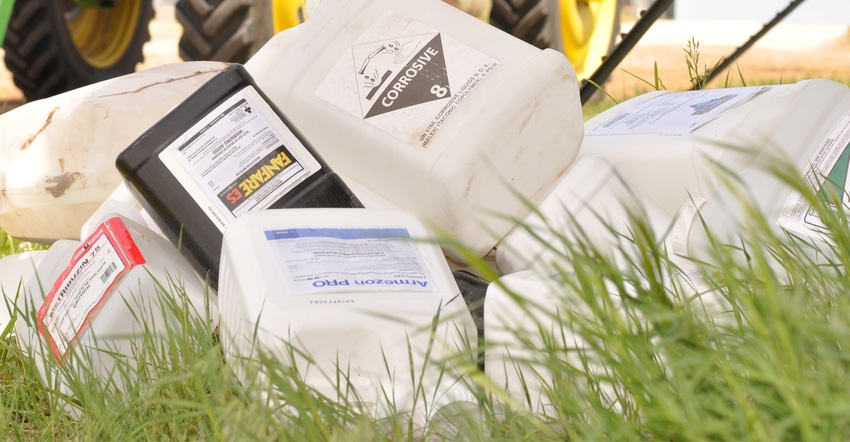
When it comes to chemicals, not all measurements are created equal. Chris Proctor, Nebraska weed science Extension educator, notes the right container makes a difference in herbicide measurements.
Case in point: Try measuring a known volume of liquid using two different measuring containers. Most likely, the two bottles will read different volumes. It’s the same with herbicide container measurements.
"This is something that's intuitive, but it gets easily overlooked," says Proctor. "You start talking to people, and they say it makes perfect sense, but it's easy to overlook it when you get busy. It's nice to make up money in your operation doing the easy things first."
For example, if a herbicide costs about $4 an ounce and the grower is putting on 3 ounces per acre at a cost of $12 per acre, overapplying 10% means an added cost of $1.20 per acre. Over 600 acres, that's $720.
"That's money you've put on the field you didn't necessarily need to," says Proctor. "Equally detrimental, you could be 10% under. In today's world, herbicide rates are often low. With FirstRate, for example, you're talking six-tenths of an ounce per acre. It doesn't take much product to be off by a significant amount. Now you're under by 10%, and that could be the difference between adequate weed control and escapes. You could start to wonder, 'Do I have weed resistance?' But in this case, it is just that your rate was low."
Making sure the measurements are correct is all the more important with dry products. For example, if you're using a container intended to measure liquids, the measurements for dry products are going to be off. Fluid ounces and dry ounces are different.
Meanwhile, different dry products have different densities, and it's important to read the container label when measuring.
"If you grab a container for Valor off the shelf, but you're actually measuring Pursuit, those products have different densities. You could be off by a pretty significant amount by doing that," says Proctor. "The second factor is the same product can change over time, as new formulations of a product are released, the density of the product can change. The take-home message is don't use last year's containers for this year's product."
When measuring dry product, the best practice may be to use a scale. "With dry products, if you read the fine print on the side of the container, all of them are plus or minus a certain percent. That's just because there's so much variability in dry product," Proctor explains. "It can only be so accurate with a volumetric container. With a scale, it's based on weight. So volume doesn't matter anymore. Ten ounces on a scale is 10 ounces."
On the other hand, density doesn't affect volume as dramatically for liquid products. Typically, anything labeled for measuring fluid ounces is fine to use, regardless of the product. The only consideration is making sure the container is appropriately sized for the volume being measured. For example, a large measuring container wouldn't be well-suited for accurately measuring smaller volumes.
These days, however, many use bulk tanks and flowmeters to measure liquid product. "A bigger issue is making sure the flowmeters are calibrated, as the calibration factor changes with the product you're measuring. So you've got to make sure you're using the right calibration. As an example, water flows differently than glyphosate," notes Proctor. "It's a good idea to get flowmeters calibrated once or twice a year to make sure it's measuring what it says it's measuring."
About the Author(s)
You May Also Like






